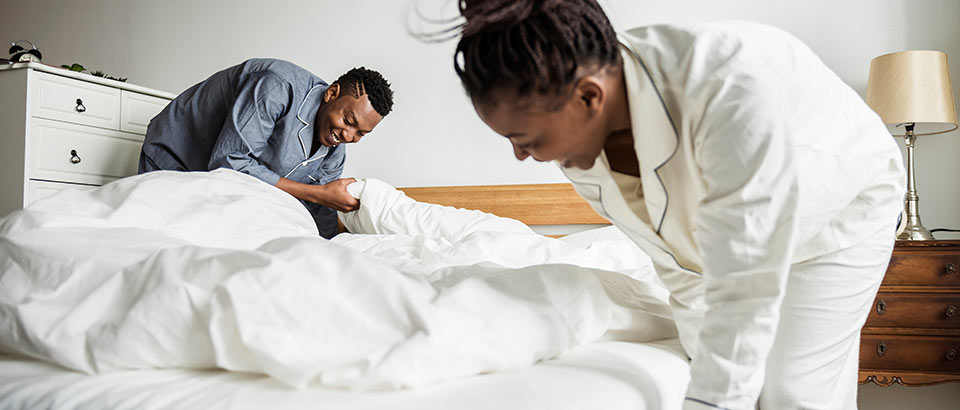
Allergens at home: Dust mites
And how Philips can help
5 min. read
We believe there is always a way to make life better. That’s why we’re dedicated to creating comprehensive solutions to help improve air quality at home, especially when it comes to allergens. In this article we focus on dust mites and, with the help of a Philips Air Purifier, what you can do to show them the door. So what exactly are dust mites? Your immune system protects you against foreign invaders, such as bacteria, fungi and viruses, that can cause infections. However, in people with allergies, your immune system mistakes a substance that’s ordinarily harmless to most people for something that’s dangerous – and attacks it. One of these substances is dust mite feces. Let’s take a closer look Allergens can be split up into outdoor and indoor allergens. A dust mite – or more specifically the proteins within the feces it produces – is the main example of an indoor allergen. A dust mite measures only about one quarter to one third of a millimetre. They are too small to see with the naked eye, but under a microscope look like white bugs. They have eight legs, so are not insects, but arthropods, like spiders. Dust mites can be found in mattresses, carpets, pillows, bedding or upholstered furniture, which serve as nests. They then produce allergens which can become airborne when disturbed by movement including human activity (such as cleaning, walking and bed-making) or air currents.[1] When do they occur? Dust mite allergens can be found year-round but are more prevalent in the summer with high humidity. How can I avoid dust mites? Dust mites thrive in temperatures of 20-25 degrees Celsius. They also like humidity levels of 70-80 percent, so in most cases it’s best to keep humidity in your home at 40-50 percent by using a dehumidifier or air conditioner.[3] As dust mites are most commonly found in the bedroom, here are some pointers to keep bed bugs at bay: Philips Air Purifiers have an in-built advanced multi-layer filtration that is capable of removing 99.97% of airborne allergens such as dust mites. If you’d like to know more about how you and your family can enjoy clean and healthier air, simply follow this link. Go on, breathe the difference, today. [1] https://www.aafa.org/dust-mite-allergy [2] https://www.allergyuk.org/assets/000/001/243/House_Dust_Mite_original.pdf [3] Portnoy J et al. Joint Taskforce on Practice Parameters; Practice Parameter Workgroup. Environmental assessment and exposure control of dust mites: a practice parameter. Ann Allergy Asthma Immunol. 2013.

